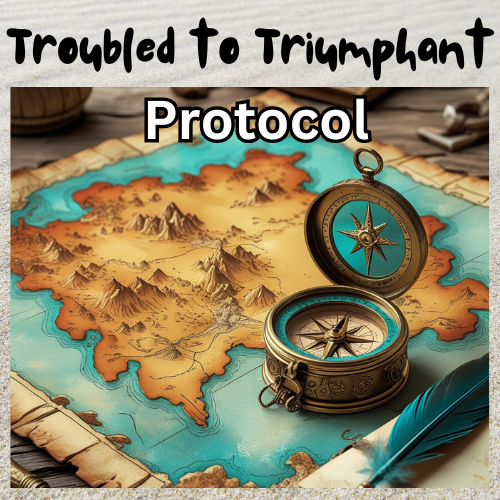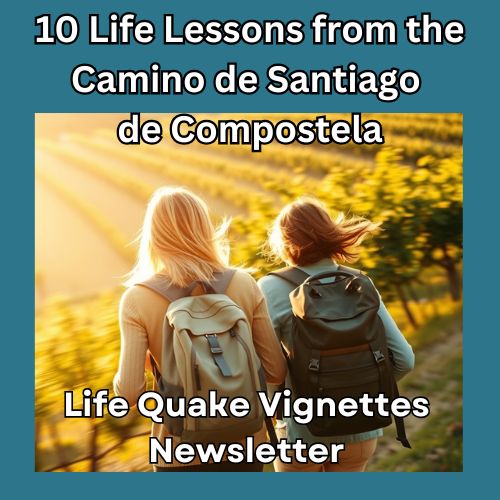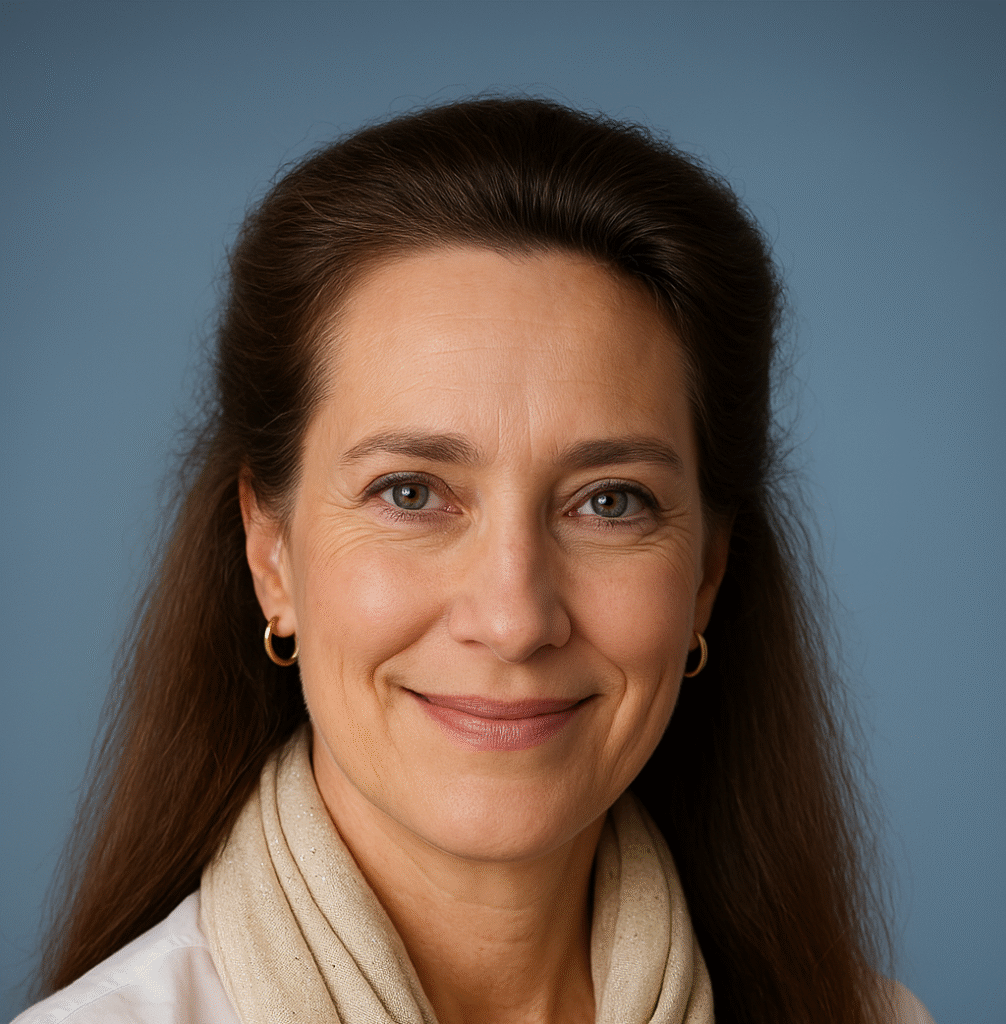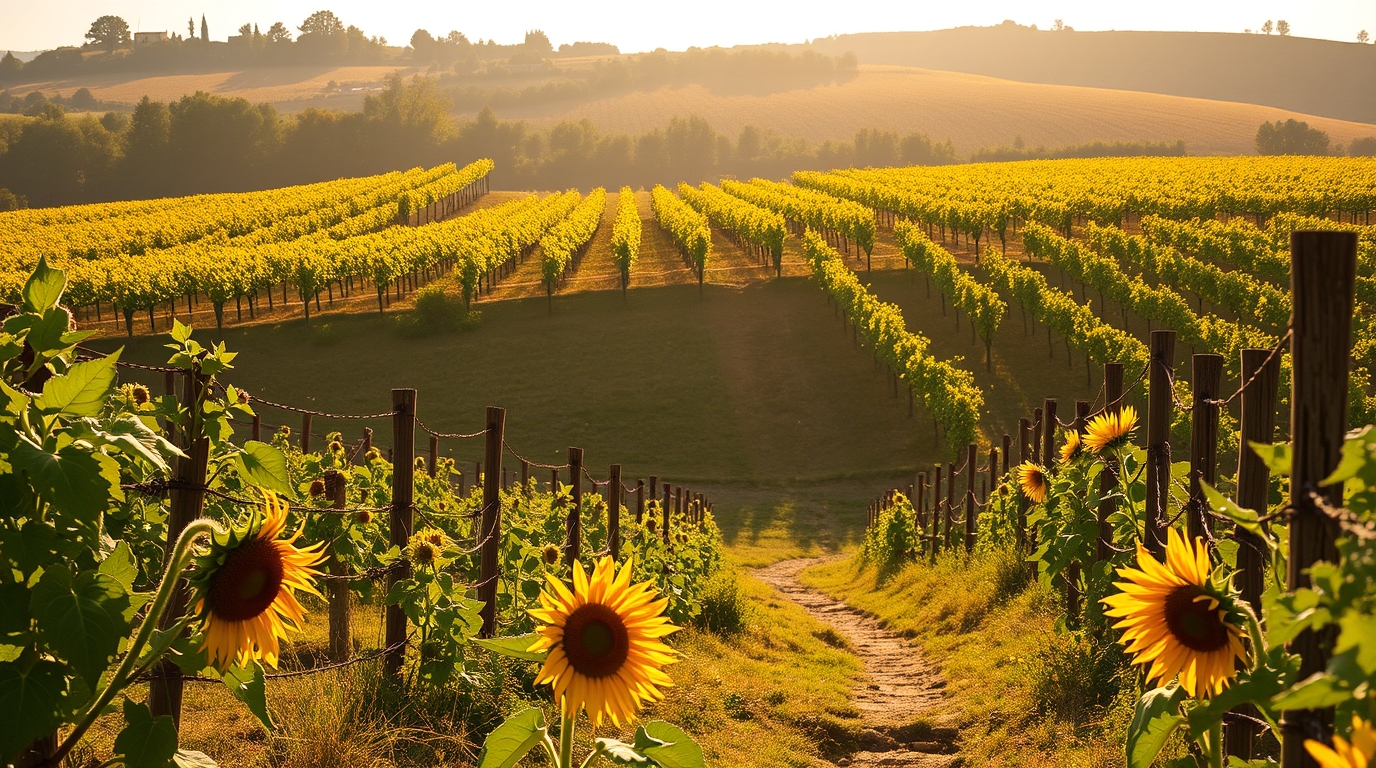Experience the transformative power of silent walking that has helped thousands process their deepest losses
The first tear fell somewhere between Eauze and Manciet.
Marie couldn’t pinpoint exactly when. Perhaps it was while walking uphill, her breath labouring, her legs burning with effort. Or maybe it was during that moment when she paused to look back at the valley below, the world she’d temporarily left behind growing small in the distance. All she knew was that after eleven months of feeling nothing—eleven months of the peculiar numbness that sometimes follows devastating loss—something inside her had finally broken open.
“I came to walk,” she told me later, her eyes now clear and bright in the golden sunlight. “I didn’t come to cry. But somehow, the Camino had other plans.”
Marie is not alone. Each year, thousands of pilgrims set out on the ancient Camino de Santiago paths that wind through France and Spain. While their stated reasons vary—adventure, spirituality, cultural exploration—many carry invisible burdens: grief, heartbreak, and loss tucked away in the corners of their backpacks and the shadows of their hearts.
What is it about placing one foot in front of another, mile after mile, day after day, that breaks through the barriers grief builds around our hearts? How does this centuries-old pilgrimage route succeed where months of traditional therapy, well-meaning advice from friends, and self-help books often fail?
The answer lies in something beautifully simple yet profoundly powerful. When we walk, especially for extended periods and distances, we enter a unique state where the rhythm of our footsteps, the steady cadence of our breathing, and the changing landscape around us create perfect conditions for our minds and hearts to process what they could not before.
“The Camino provides what I call ‘moving stillness,'” explains Thomas, a grief counsellor who walked the 500-mile French Way after losing his wife to cancer. “Your body is in motion, which somehow frees your mind to be still enough to face the things it’s been running from.”
This phenomenon isn’t just anecdotal. The combination of rhythmic physical movement, distance from daily triggers and responsibilities, immersion in nature, and the unique camaraderie of fellow pilgrims creates an almost alchemical environment for transformation. On the Camino, grief doesn’t disappear—it finally has the space to be felt, explored, and ultimately, integrated into the new landscape of your life.
For those carrying the weight of significant loss, this ancient path offers something increasingly rare in our busy, distraction-filled modern world: the gift of space, time, and gentle movement to begin healing what feels irreparably broken.
Summary: The Camino’s Gift to the Grieving
The Camino de Santiago offers a unique healing environment for those processing grief and loss. Unlike traditional settings, the pilgrimage combines physical movement, natural beauty, community, and spiritual tradition to create an ideal space for emotional processing. By removing us from the distractions and routines that often delay grief work, the Camino’s daily rhythm of walking creates both the mental space and the supportive conditions needed to confront and move through profound sorrow.
Key Takeaways:
- Rhythmic Walking Creates Mental Space: The repetitive motion of walking for hours each day induces a meditative state where emotions can safely surface and be processed.
- Distance from Daily Life Offers Perspective: Stepping away from familiar environments and routines allows for fresh perspectives on loss and its meaning in your life.
- Supportive Pilgrim Community Facilitates Healing: The unique camaraderie among fellow pilgrims provides both emotional support and the freedom to be vulnerable with strangers who often become friends.
- Physical Challenges Mirror Emotional Work: Overcoming the Camino’s physical demands parallels the emotional challenges of grief, creating meaningful metaphors and building resilience.
- Spiritual Dimensions Provide Comfort: Walking an ancient spiritual path connects pilgrims to something larger than themselves, offering comfort and new frameworks for understanding loss.
When Grief and Geography Converge
When I talk about “My Camino,” unlike most others, I do not refer to a pilgrimage I made at some or such time, in the recent or distant past.
“My Camino” is a specific stretch of this famous trail, spanning a distance of 42 kilometres, from Eauze to Aire-sur-Adour, in the south-west of France, and passing not less than a kilometre from my front door.
On the stretch of the trail, I discovered that grief isn’t something you “get over”—it’s something you learn to carry differently. It’s a process, not an event. And here’s where the wonder of the Camino comes in: it offers a physical journey that perfectly mirrors the emotional one.
I’ve walked this part of the trail many times over the years. I’ve watched as widows found their footing again after losing spouses of forty years. I’ve seen parents grieving children, children grieving parents, and people mourning relationships, careers, and versions of themselves that no longer exist.
And I did my own mourning. Alone on the path.
What I’ve witnessed repeatedly is that something about the geography of grief makes it resistant to being processed while sitting still. Grief needs movement. It needs space. It needs a path forward that isn’t just metaphorical.
On the Camino, that path is literal. It stretches before you each morning, marked by red and white arrows (in France) and scallop shells. You need only put one foot in front of another. And somehow, in the simplicity of that action repeated thousands of times, complicated knots of emotion begin to loosen.
“I tried everything after my daughter died,” James told me as we walked through a misty morning in the French countryside. “Therapy, medication, support groups. They all helped a bit. But it wasn’t until I started walking the Camino that I felt her death start to make any kind of sense to me. Not that I accepted it—I’ll never accept it—but I could finally start carrying it without being crushed by it.”
The Walking Mind: How Movement Unlocks Emotion
There’s wisdom in what James discovered. Our bodies and minds aren’t separate entities—they’re intimately connected. When grief lodges in our bodies, sometimes physical movement is what dislodges it.
The rhythm of walking for several hours a day creates what some neuroscientists call a “default mode network” in our brains—a state where subconscious processing flourishes. It’s similar to what happens during meditation, but with an important difference: the continual changing of scenery prevents us from getting stuck in thought loops.
On the Camino, your surroundings shift constantly. One moment you’re crossing a medieval bridge, the next you’re strolling through a forest, then you’re walking alongside vineyards or traversing a small village. This gentle but constant change of environment helps prevent the mind from locking into patterns that reinforce grief without processing it.
Additionally, the physical exertion produces endorphins—natural mood elevators. You’re literally walking yourself into a more receptive state for emotional processing.
I’ve had walkers tell me they experienced breakthrough moments while tackling a particularly steep hill, while resting their feet at a small café, or while walking in pre-dawn darkness with only their thoughts for company. The Camino provides endless settings for these transformative moments.
Finding Your Tribe in Shared Sorrow
One of the most unexpected healers on the Camino is the community that forms among pilgrims. I call it “intimate anonymity”—the paradoxical freedom to share your deepest truths with people you’ve just met.
“I talked more about my husband’s death to a stranger at lunch than I ever told my best friend of twenty years,” said Elena, a widow from Canada. “There was no history, no expectations. Just human connection in a place where everyone understands that we’re all carrying something.”
This phenomenon isn’t unique to grief, but it takes on special significance for those in mourning. In our regular lives, we often feel pressure to “move on” or “be strong.” Friends and family, though well-meaning, may grow uncomfortable with extended grieving.
On the Camino, there’s an unspoken understanding that everyone walks with purpose, and many walk with pain. The pilgrim community doesn’t rush healing or expect grief to follow a timetable. Fellow walkers offer presence without pressure, stories without solutions, and companionship without demands.
And when you need solitude instead, that’s respected too. You can walk for hours in silence, lost in memory or meditation, then rejoin the community when you’re ready. This natural ebb and flow between connection and contemplation creates ideal conditions for grief work.
The Landscape as Mirror and Medicine
Never underestimate the healing power of beauty. The Camino traverses some of Europe’s most stunning landscapes—from the dramatic Pyrenees to the rolling hills of Galicia, from ancient forests to fields of sunflowers stretching to the horizon.
This natural splendour does more than please the eye. It reminds us of our place in a larger, ongoing story. It puts our pain in context without diminishing it.
Many pilgrims report that the landscape itself becomes a kind of therapist. The wide-open spaces provide room for big emotions. The challenges of the terrain—the steep climbs, the rocky descents—become metaphors for the grief journey itself.
Mark, who walked after losing his brother to suicide, told me about a particularly difficult day climbing in intense heat. “I was angry—at the Camino, at the sun, at my aching feet. And then I realised I wasn’t just angry about the climb. I was finally letting myself feel the anger I had at my brother for leaving us. By the time I reached the top, I was sobbing. But I also felt lighter than I had in months.”
The natural world has a way of holding our pain without judgment. The mountains don’t flinch at your tears. The rivers keep flowing whether you’re laughing or crying. There’s profound comfort in that continuity.
The Weight She Carried
The morning Ana left Eauze, her backpack weighed exactly 22 pounds. She had spent weeks researching ultralight gear, trimming unnecessary items, and weighing each selection on a kitchen scale. Everything had been chosen with painstaking precision for the journey ahead.
But Ana carried another weight that no scale could measure.
Four hundred and ninety-three days earlier, she had held her mother’s hand as she took her final breath after a brutal battle with pancreatic cancer. Ana had been not just daughter but caretaker, advocate, nurse, and ultimately, witness to her mother’s suffering. When the funeral ended and the relatives departed, Ana had returned to her job, her apartment, her life—seemingly intact on the outside while collapsing within.
“I kept waiting to feel better,” she told me later. “Everyone said time heals. But time was passing, and I wasn’t healing. I was just getting better at pretending.”
The idea of walking the Camino came from an old postcard her mother had kept on her refrigerator for years—a sun-drenched image of the cathedral in Santiago de Compostela. “Someday,” her mother had always said, though someday never came.
The first three days on the Camino were physical agony for Ana. Her carefully researched boots created blisters that burned with each step. The meticulously selected backpack chafed her shoulders raw.
“I almost quit,” she admitted. “I called my sister on the fourth morning and told her I was coming home.”
But something made her continue—one more day, she promised herself. Just one more.
It was on this “one more day” that Ana met Claudia, an older woman from Portugal who had walked the Camino seven times. Claudia took one look at Ana’s pack and shook her head.
“Too heavy,” she said simply, then helped Ana spread the contents under a plane tree in a small village square. Together they created a pile to be shipped home and another, much smaller pile to keep.
“Not just the pack,” Claudia said quietly as they worked. “You carry too much here too.” She touched her own heart.
Something about the woman’s gentle directness broke through Ana’s carefully maintained composure. Before she knew what was happening, Ana was telling this stranger everything—the grueling months of her mother’s illness, the helplessness she felt watching the strongest person she knew diminish daily, the hundreds of small and large decisions she second-guessed, the words unspoken, the guilt that perhaps she hadn’t done enough.
Claudia listened without interruption. When Ana finally fell silent, the older woman simply nodded.
“Now you will walk with this,” she said. “Not to leave it behind. But to learn its shape. To make room for it.”
They walked together that day. Claudia set a pace that was challenging but manageable for Ana’s injured feet. They spoke sometimes of profound things, sometimes of trivial ones, and sometimes they didn’t speak at all. On the morning, Ana woke to find Claudia gone—moved ahead at her own pace after leaving a simple note: “The Camino provides what you need.”
Ana continued alone, her pack literally and figuratively lighter. As the days passed, something shifted. The physical pain didn’t disappear, but it changed character—becoming more like information than punishment. Similarly, her grief remained, but its texture transformed.
One evening, in a small stone church along the way, Ana found herself writing a letter to her mother that began, “I’m walking for both of us now.” She left the letter at the foot of a carved Madonna, along with a small stone she’d carried from home.
“I can’t explain exactly what changed,” Ana told me months later as we sat outside a café in Santiago, the cathedral gleaming in the distance. “The grief didn’t go away. But it somehow made room for other things too—for beauty, for friendship, for unexpected kindness from strangers. For the first time since she died, I could feel something besides loss.”
She touched the scallop shell hanging from her neck—a gift from Claudia that she’d found with the note.
“The Camino teaches you that you can carry difficult things and still move forward. One step at a time. And eventually, those steps add up to a journey you never thought you could make.”
Walking Through: Practical Aspects of Grief on the Camino
If you’re considering walking the Camino to process your own grief, here are some practical considerations to keep in mind:
Timing Matters: Consider where you are in your grief journey. The Camino is not an escape from grief but a place to engage with it deeply. Some find it most helpful after the initial shock has worn off but before patterns of grief have become too entrenched. Others walk years after their loss when they feel ready to revisit their grief from a new perspective.
Physical Preparation: While you don’t need to be an athlete, some physical preparation will help ensure that physical discomfort doesn’t overwhelm your emotional process.
Travel Light: Both literally and metaphorically. Pack minimally for your journey. Consider what emotional baggage you might also need to set down to make this journey productive.
Set Intention Without Expectation: Having an intention for your walk can help focus your experience, but be wary of specific expectations about how healing should look or feel. The Camino works in its own way and time.
Create Space for Feelings: Consider keeping a journal, taking photographs, or finding another way to document your internal journey alongside the external one. These practices can help create containers for intense emotions that may arise.
Be Kind to Yourself: The Camino is challenging under any circumstances. Walking it while grieving requires extra self-compassion. Rest when needed. Cry when moved. Laugh when possible.
Consider Walking with Support: While many find solitude valuable on the Camino, having knowledgeable support can make the journey more accessible, especially for first-time pilgrims dealing with grief. This is where a small, non-guided retreat like mine can provide a balance of independence and support.
Further Reading
For those looking to deepen their understanding of grief, pilgrimage, or the Camino de Santiago, these books offer valuable insights:
- Walking Home: A Pilgrimage from Humbled to Healed by Sonia Choquette – A personal account of finding healing on the Camino after significant loss.
- The Wild Edge of Sorrow: Rituals of Renewal and the Sacred Work of Grief by Francis Weller – Explores how traditions and rituals, including pilgrimage, can help process grief.
- Traveling with Grief: Walking the Camino de Santiago by Beth Jusino – A memoir specifically focused on walking the Camino while mourning.
- It’s OK That You’re Not OK: Meeting Grief and Loss in a Culture That Doesn’t Understand by Megan Devine – A compassionate guide to grief that complements the Camino experience.
- The Art of Pilgrimage: The Seeker’s Guide to Making Travel Sacred by Phil Cousineau – Explores how to approach pilgrimage with intentionality, applicable to grief journeys.
Frequently Asked Questions
Is the Camino appropriate for all types of grief?
The Camino can be helpful for many types of loss—death of loved ones, end of relationships, career changes, health diagnoses, and other significant life transitions. However, if you’re in acute crisis or the very early stages of traumatic grief, consider speaking with a mental health professional before undertaking such an emotionally demanding journey.
How physically demanding is the Camino? Can I do it if I’m not in great shape?
There are many routes of the Camino with varying difficulties. With proper preparation and realistic daily distances, most reasonably healthy adults can walk portions of the Camino. My retreats in southwest France focus on gentler sections appropriate for varied fitness levels, with options for shorter daily distances.
Will walking the Camino “fix” my grief?
Walking the Camino won’t make grief disappear—nor should it. Instead, it offers a space to develop a different relationship with your loss, potentially finding ways to integrate it into your life with less acute suffering. Many pilgrims report feeling a sense of peace or acceptance that was previously elusive.
Do I need to be religious to benefit from walking the Camino for grief?
Not at all. While the Camino has historic roots as a Catholic pilgrimage, today it welcomes people of all faiths and no faith. The spiritual dimension of the Camino is what you make of it. Many non-religious pilgrims find the journey deeply meaningful on personal, historical, or philosophical levels.
Can I walk alone if I’m processing grief, or is it better to go with others?
This is a personal choice. Solitude offers space for introspection, while companionship provides support during difficult moments. My retreat format offers a middle path—the community of fellow pilgrims, with the freedom to walk alone or with others during the day as you prefer.
Walk Toward Healing: 7-Day Camino Retreat in Southwest France
If what you’ve read resonates with your own experience of loss, perhaps it’s time to consider walking the ancient path that has helped countless others find their way through grief.
My 7-day Camino de Santiago retreats in southwest France offer a thoughtfully structured experience for those seeking to process grief and loss through pilgrimage. Unlike heavily guided tours, my retreats provide the framework and support you need while preserving the personal nature of your journey.
You’ll walk a beautiful section of the Voie du Puy (GR 65), one of the most scenic and historically rich French routes to Santiago. Starting in the medieval town of Eauze with its magnificent cathedral, we make our way through the verdant landscapes of the Gers, walking between 10 and 11 kilometres each day.
What makes these retreats unique is the balance we maintain between community and solitude. You’ll have fellow travellers who understand the grief journey, creating a supportive environment where stories can be shared without explanation or judgment. Yet each day’s walk remains your own—to process at your pace, in your way.
As someone who found my own healing on these paths after profound loss, I’ve designed these retreats to provide what I wish I’d had on my first Camino—enough structure to feel secure, enough freedom to find my way, and companions who understood that sometimes the most supportive thing is simply walking beside someone in silence.
If you’re carrying grief that needs space to breathe, consider joining us this year as we follow the ancient scallop shells and arrows through the French countryside. Together, we’ll discover what generations of pilgrims have found: that sometimes, the path forward through grief is quite literally a path.
For dates, pricing, and registration information, click here or contact me directly. Early registration is recommended as our groups are intentionally kept small to preserve the intimate nature of the experience.
Remember what the Portuguese pilgrim told Ana: “The Camino provides what you need.” Perhaps what you need is waiting for you on this ancient path.
Hit the pause button and regain your footing during a From Troubled to Triumphant Retreat. Imagine walking a peaceful stretch of the Camino de Santiago, where every step helps untangle the mental clutter or spending time with gentle Friesian horses who teach you the art of mindfulness. Whether you choose to make a change or are forced to, this retreat offers the perfect blend of peace, perspective, and playful exploration to help you rise from troubled to triumphant!


10 Powerful Life Lessons Learned While Walking the Camino de Santiago – a free guide filled with 10 not just “quaint anecdotes” or Instagram-worthy moments (though there are plenty of those) but real transformations from real people who walked the same insight-giving trail you might want to walk one day – Subscribe to my monthly newsletter to Download the Guide
I put the essence of who I am, and everything I have experienced that makes me who I am, with great enthusiasm, into my retreats, courses and books. – Dr Margaretha Montagu (MBChB, MRCGP, NLP master pract (cert,) Transformational Life Coach (dip,) Life Story Coach (cert) Counselling (cert,) Med Hypnotherapy (dip) and EAGALA (cert)


